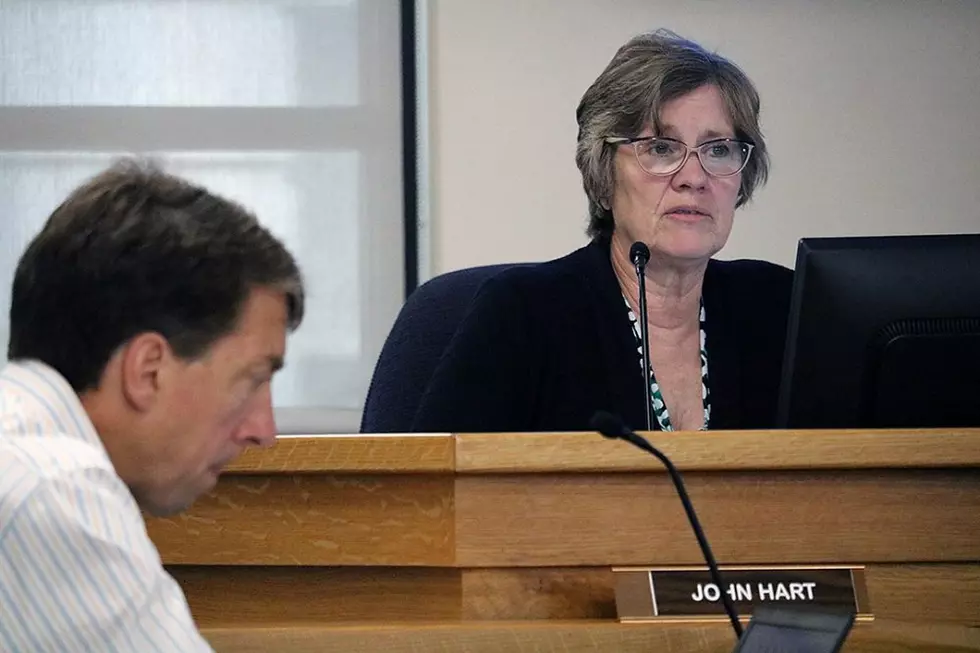
County commissioner opposes city’s annexation of airport, industrial park, affordable subdivision
Despite a plea to the contrary by County Commissioner Jean Curtiss, the Missoula City Council on Monday unanimously gave initial approval to the annexation of 3,200 acres west of the city limits, including Missoula International Airport.
Yet to come is a Dec. 10 public hearing and final vote.
But Curtiss, who said she was there as a private citizen and resident of Ward 2, asked that council members remove the annexation proposal from their consent agenda and reconsider the entire notion.
There are simply more negatives than positives for city agencies and residents of the area, she said.
The annexation zone – which also includes Missoula Industrial Park, Canyon Creek Village subdivision, segments of West Broadway and Montana Rail Link rights-of-way – is not an “underserved” area of the county, Curtiss said.
“The county currently provides all the things the city would provide,” she said.
In fact, a memo from the Missoula Police Department included in the council’s information for Monday night’s meeting expressed considerable concern for the number of officers needed to provide law enforcement for the annexed area.
There are 250 homes and 550 residents in Canyon Creek Village, for example, plus the airport will need backup assistance for its officers 24 hours a day. And an initial review of 9-1-1 call data showed 1,000 calls for service in the proposed annexation area in 2017, with a three-year trend showing an increase of 15 percent per year.
Annexation of the 3,200 acres – or five square miles – would require another three full-time police officers and two full-time police support specialists, according to the memo. And that’s in addition to the six extra officers already requested by MPD to meet the city's overall growth.
Similar concerns came from the city fire chief, and from Curtiss – who said Missoula Rural Fire has provided service to the area for 20 years and is well equipped to do so.
The commissioner also raised concerns about the annexation’s impact on affordable housing, one of the city and county’s most significant issues.
Canyon Creek Village “is a place that is affordable,” she said. It is densely developed and has made home ownership affordable to dozens of Missoula families who could not afford to buy homes elsewhere in the valley.
Annexation by the city will increase the taxes on those homes by 20 percent, according to Curtiss, “but they will get no additional services.”
“Higher taxes, no new services,” she repeated. For some residents, annexation will take the Canyon Creek homes out of affordability, she said.
No council member at Monday night’s meeting was willing to remove the item from the consent agenda, so the motion and discussion continued. Absent from the meeting were councilors Jesse Ramos, Julie Merritt and Mirtha Becerra.
City Council president Bryan Von Lossberg spoke to Curtiss’ request, saying he didn’t want to remove the item because Monday’s vote was simply an initial approval that moved the discussion to a public hearing and wider debate. Then will come the final vote.
Plus, he said, the issue has received considerable discussion and scrutiny during council committee meetings and other departmental-level meetings “for quite some time.”
“But I don’t want to give you the impression that by keeping it on the consent agenda I want to limit discussion,” Von Lossberg said. “That’s why I support a public hearing.”
The hearing on the full annexation is set for Monday, Dec. 10. The council could vote on the measure that night as well.
In addition, a separate public hearing is set for Nov. 26 on the zoning that would accompany annexation. A new “airport” zoning district would be created, for example. And the area closest to Missoula Industrial Park would be zoned “limited industrial-residential.”
That hearing was originally scheduled for Monday but was delayed after DeSmet School officials raised concerns about the annexation’s possible impact on their school – and their reluctance to be part of the limited industrial-residential zone.
At a committee meeting last week, DeSmet principal Matthew Dreissen said that his students’ parents don’t want industrial businesses bumping up next to their school.
Built in 1890 as a rural school catering to students from as far away as Evaro, DeSmet was slowly surrounded by industrial businesses as Missoula expanded west. That was compounded in 1998 when Missoula County included the area as a tax-increment district with a focus on business development.
As he has for two years, Dreissen argued for residential development around the school, not only for the safety of his 110 students but also to provide middle-income housing and possibly a few more students.
The one-week delay on the zoning measure is intended to provide more time to resolve the school’s concerns.
